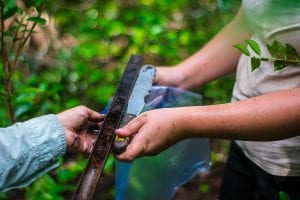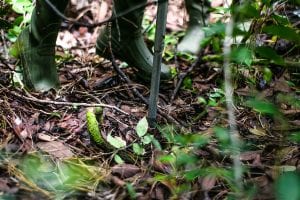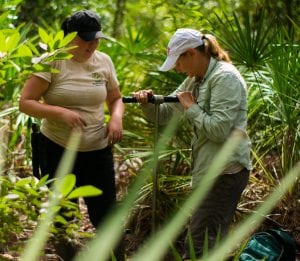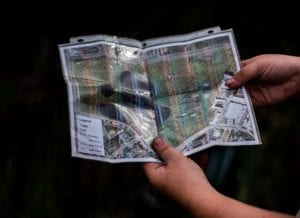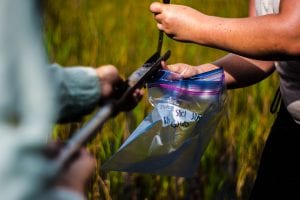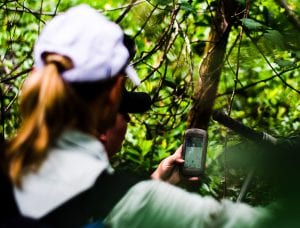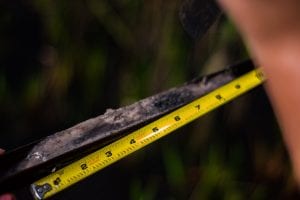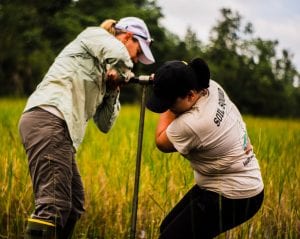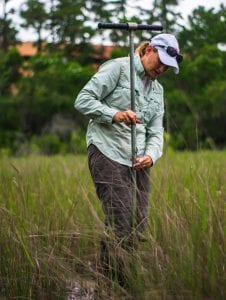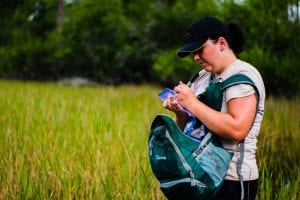UCF Biologists Hunt For Hidden Carbon
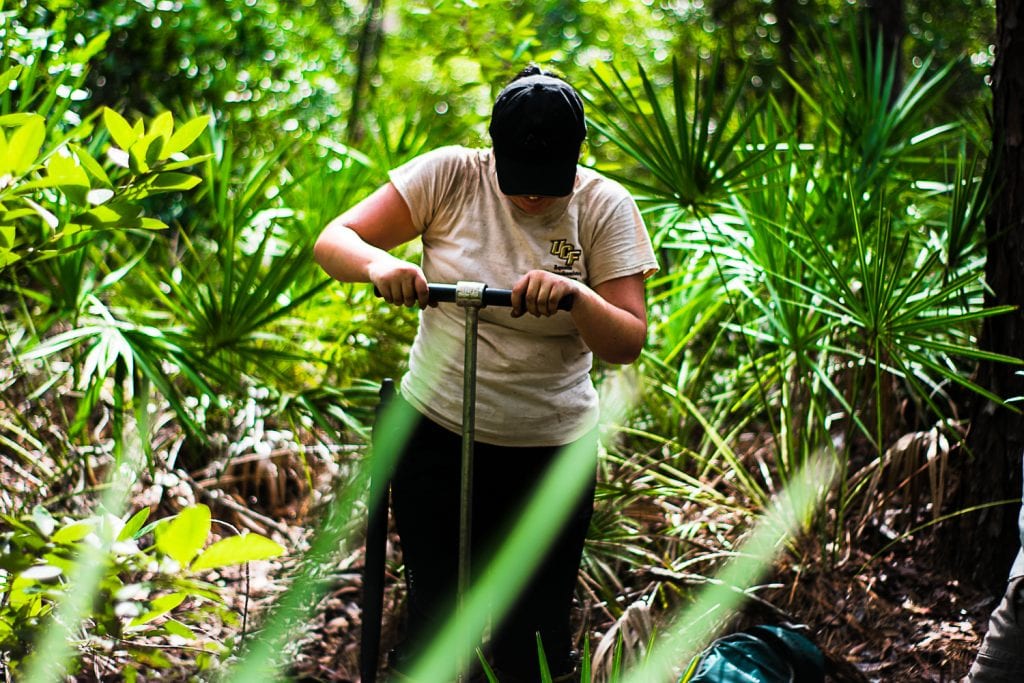
Jennifer Bennett extracts a soil sample from the natural lands surrounding UCF.
Car exhaust and factory pollution take a lot of blame for global warming. But a team of UCF biologists are on the hunt for a hidden storage of carbon that’s right beneath your feet.
Plants spend their lifetime absorbing carbon dioxide, then deposit it into the soil when they die. If they’re trapped under water though, that carbon can’t escape, and it forms huge pockets of carbon underground.
As soon as that pocket is disturbed — say, for excavating a new dorm on campus near Lake Claire — thousands of years of built-up carbon is released back into the atmosphere. And that’s exactly what Assistant Professor of Biology Lisa Chambers, Ph.D., and environmental studies senior Jennifer Bennett are working to avoid.
“This is a topic I’ve been interested in for a long time,” said Chambers. “We’re really lucky to have this much natural land on UCF’s main campus to explore.”
Finding those pockets of carbon started with picking 70 sampling sites at random in the natural lands surrounding UCF. Then it was a matter of collecting samples from those spots — many of which are far off established trails. On a recent steamy summer morning, Chambers and Bennett sloshed through a shallow pond just behind the dorms on W. Plaza Drive. A handheld GPS device indicated where they should stop.
Chambers and Bennett assembled a long, thin metal rod, then pushed it through the soil. Their target was the carbon-rich layers of the soil. This one was easy, at around seven inches. In other spots they’ve had to drill down a full 16.5-feet to capture all the carbon buried underground.
“It definitely gives you a workout,” Bennett said, wiping sweat.
The collected samples are analyzed in the lab to determine exactly how much carbon they contain. That data will be compiled into a heat map of campus, indicating the location of the most carbon-rich deposits. It’s a technique that scientists around the globe are replicating as human impact exposes historic wetlands. The Everglades and area surrounding Lake Okeechobee are just one example.
Bennett is taking lead on the research as a directed independent research project funded by the Office of Undergraduate Research. The work is hot and dirty, but it’s exactly where Bennett pictures her future career in environmental sciences.
“It’s personally rewarding, but I’m also excited about the long-term impact that this work will have on protecting the environment,” Bennett said.
- A carbon sample is measured and bagged.
- A long, thin metal rod is pushed into the ground until it yields a carbon-rich sample for study.
- Senior Jennifer Bennett (left) and Lisa Chambers, Ph.D., extract a soil sample.
- 70 random sites were chosen for the carbon study.
- Carbon samples are bagged for study.
- GIS mapping makes exact mapping of carbon hot spots possible.
- Measuring samples allows the team to determine exactly how deep the carbon lies under the soil.
- Pushing the sample rod into the ground can be a two-person job when sand and rock is present.
- Assistant Professor of Biology Lisa Chambers collects a soil sample.
- Jennifer Bennett marks collection site data.

